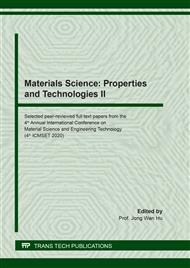p.17
p.22
p.28
p.35
p.40
p.46
p.51
p.56
p.61
Effect of Co-Solvents on Physicochemical Properties and Stability of Areca Nut Extract Loaded Nanoemulsions
Abstract:
Areca nut extract provides a variety of pharmacological effects that are beneficial for skincare applications. A nanoemulsion of areca nut extract was developed to mask the intense color and to improve the water solubility of the extract. This work studied the impact of a co-solvent on the characteristics and stability of the nanoemulsion. Our former optimized nanoemulsion was modified by adding a common co-solvent, propylene glycol or polyethylene glycol 400 (PEG400), to the formula. Phase separation, particle characteristics, antioxidant activity, in vitro cytotoxicity, and stability of the modified nanoemulsion were evaluated. This work has shown the successful encapsulation of areca nut extract with a great improvement of stability, well-maintained antioxidant activity and low toxicity on normal human skin fibroblast.
Info:
Periodical:
Pages:
40-45
Citation:
Online since:
September 2020
Price:
Сopyright:
© 2020 Trans Tech Publications Ltd. All Rights Reserved
Share:
Citation:


